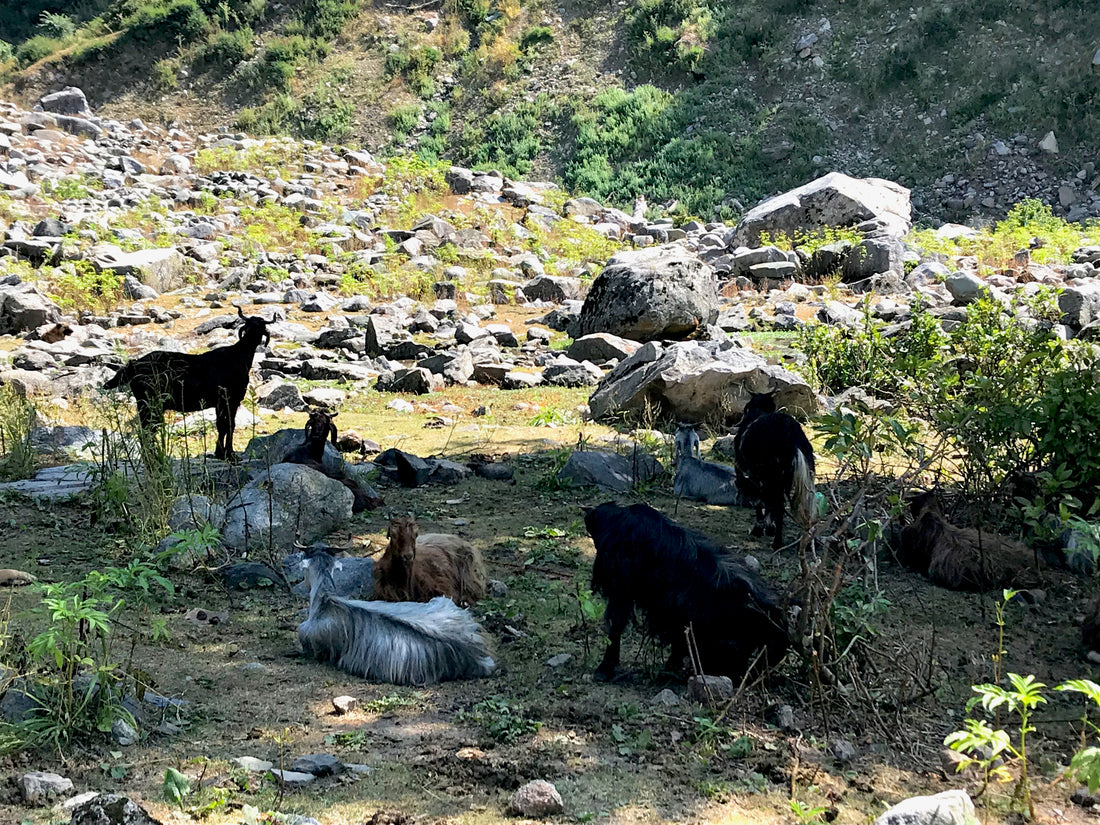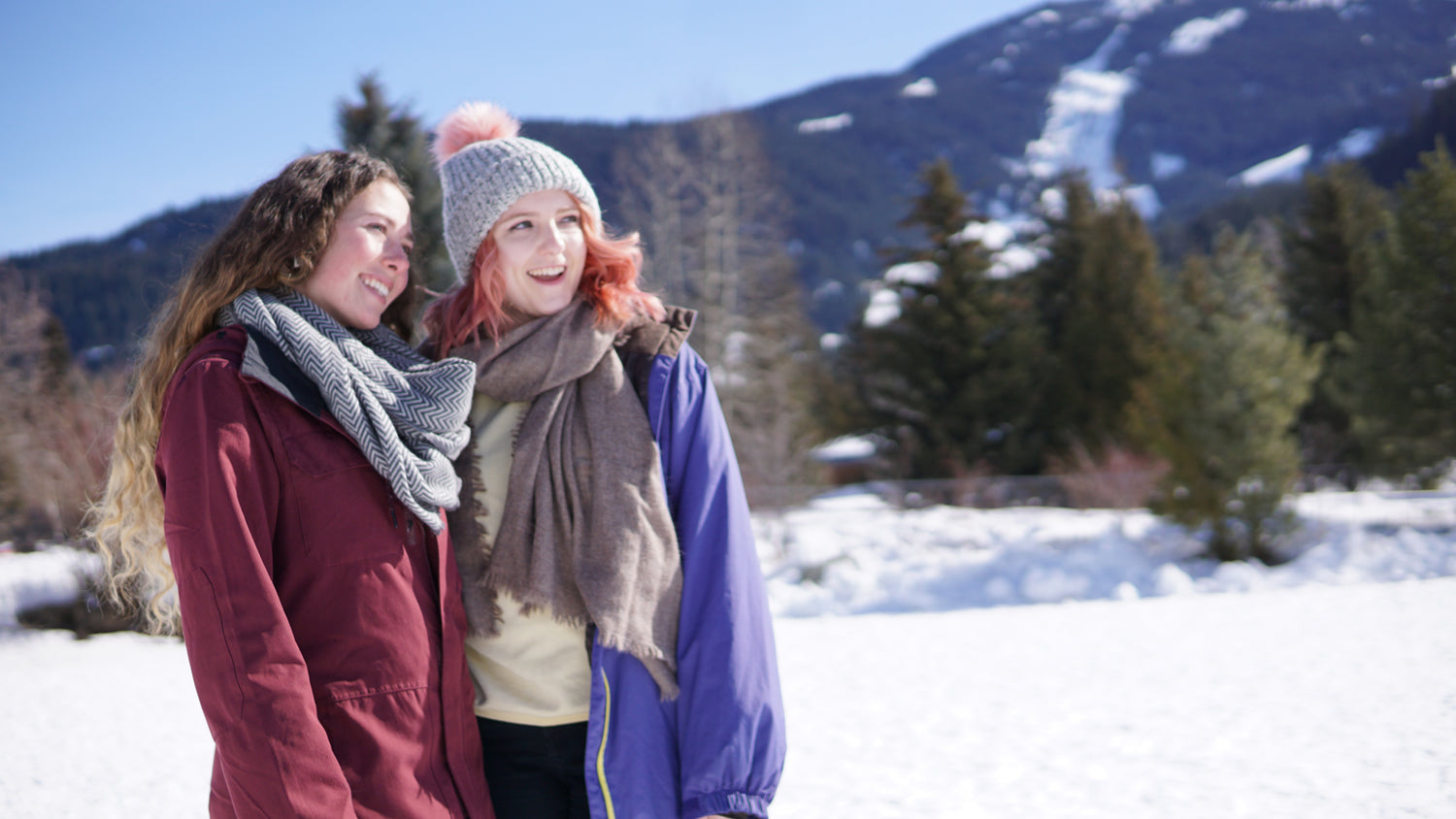The Nomad Goatherds Passing Through a Kashmiri Valley
It was only our first day in Srinagar. The city was on strike, and we couldn't go to the more famous Kashmiri tourist attractions like Pahalgam or Sonmarg. But there was somehow still a Canadian tourist that our houseboat host was taking to Naranag that day.
"Why don't you come with us?" he said. Naranag is a mountain village just as lovely as Sonmarg, he claimed. If we liked it, we could spend a few days with a local homestay there. (Which we did end up doing.)
I had hoped to personally see Kashmiri cashmere weaving on this trip, but it wasn't happening. But I unexpectedly saw something else related to Ethical Cashmere, instead. Even before we left Srinagar, I got to see Kashmir's nomadic shepherds and their free range cashmere goats.

We stopped the car as the goats ambled past in the next lane, black and white, and the browns and greys in between. A tall shepherd walked past the car window, plaid woollen shawl on his shoulder, and a wooden staff held as a walking stick.
I asked what the people are called. My houseboat host struggled slightly to find the words. "They are the gypsies," he finally said. "They move from place to place, and pasture the flock in the mountains. They are the Gujjar people, from the Jammu area. In Naranag you can meet them," he added.
Before we left the city, another Gujjar family went past, this time with a flock of sheep, and pack horses with their belongings.
Countryside outside Srinagar
We drove across the countryside outside of Srinagar, a wide valley plain, with the Himalayan foothills always looming steep and majestic. Across bridges over rocky mountain streams, past golden grain fields in the midst of harvest.
There were more flocks of sheep and goats even along the highway. They kept close to the roadside, never more than two or three sheep deep, obediently following along almost in single file. It was nearing the end of summer, so the nomadic Gujjar had begun to descend from the high mountain pastures.
The plains were exchanged with rolling hills, and the grain fields were now terraces up mild slopes, interspersed by rural Kashmiri homes, zinc roofs glinting in the sun. As we neared the hamlets of Naranag, we passed by a local mosque, its Himalayan pagoda roof topped with a loudspeaker for the call to prayer. And more goats on their long roaming back down the highlands.
Cashmere goats pasturing at Naranag
Our homestay host took us hiking in the valley. Just outside the village's cluster of homes, the hill slopes were peppered with rough, timber-roofed stone huts.
Local shepherds from the villages pasture their flocks too, he said, taking flocks of sheep and goats across the rocky hill pastures for good summer grazing. While pasturing the flock, they live in these simple huts, built generations ago.
It is customary to visit inhabited huts along your route. A woman from the village was a shepherdess in one such hut, and we stopped by for tea.


Cashmere goatherds of the Himalayas
We met a nomad family down near the riverbank where the Gujjar were camping. They seemed to be perennial visitors, for our homestay host seemed to know them as friends. They looked similar to the villagers, symmetrical dark features, high cheekbones and bright eyes. Baiti remarked on the natural attractiveness of Kashmiris, and it was hard to disagree.
The Gujjar tents were basic, but underneath the tarps were everything you'd need for comfort, and no more. Language barriers prevented conversation, but we were introduced to the women of the family, and sat together for even more tea. I was fascinated by their camp kitchen, constructed of stacked rocks and a hand-fashioned clay stove. I asked, and was told that they indeed built them every single time they made camp, and that it only takes them an hour.

While they were there at the camp, their goats were completely free range by the riverbank. We saw some of them later, from a height, right at the water's edge and clambering upon boulders by the stream. I wondered how the Gujjar recovered them all when they were ready to move again, given how much freedom the goats enjoyed. But apparently, they had their ways. Light a fire and make food; the goats will return of their own accord.
Bringing cashmere herding to Nepal
Much later, when we were reunited with Mr. Ghulam's family in Srinagar, his brother told us about the time they introduced cashmere herding to Nepal.
When Mr. Ghulam migrated to Nepal, as a former trekking guide, it was natural for him to explore the mountains around Pokhara. He found shepherds and good mountain pastures in the upper Himalayas, but they weren't herding cashmere goats. So he brought in Kashmir's purebred cashmere breeds, and now Nepal also produces free range cashmere.

----
I asked how difficult it would be to see the cashmere goats moulting in their summer pastures. It depends, they told me. You have to know your way in the mountain, to find the Gujjar. They go very high up the mountain, so it depends on how comfortable you are with high altitude trekking.




